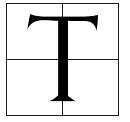Why “Charles the Bewitched” Was the Last of the Spanish Habsburgs
Physical and mental infirmities from decades of inbreeding plagued Charles II
 The House of Habsburg was a royal powerhouse. Members of the family sat on the thrones of Europe from 1273 until the dissolution of the Austro-Hungarian Empire in 1918. The Habsburgs adopted a unique approach for maintaining and expanding their power. They followed a policy of marrying into other dynasties. While family members held power in various countries, two main branches emerged: the Austrian and the Spanish.
The House of Habsburg was a royal powerhouse. Members of the family sat on the thrones of Europe from 1273 until the dissolution of the Austro-Hungarian Empire in 1918. The Habsburgs adopted a unique approach for maintaining and expanding their power. They followed a policy of marrying into other dynasties. While family members held power in various countries, two main branches emerged: the Austrian and the Spanish.
Although an effective political device, the repeated intermarriage caused inbreeding. It was so extreme, two Spanish geneticists referred to the Habsburgs as an “inbreeding laboratory.” Charles (Carlos) II of Spain is the poster child for the consequences. The law of genetics made him the last of the Spanish Habsburgs.
Experts say that in its 184-year-rule (1516–1700), more than 80 per cent of Spanish Habsburg marriages were between close blood relatives, including first cousins and uncles and nieces. Charles II’s parents were a prime example. His father, Philip IV, was the uncle of his mother, Mariana, making his grandmother also his aunt. Philip was a Spanish Habsburg; Mariana was an Austrian Habsburg. All of Charles II’s great-grandparents…
